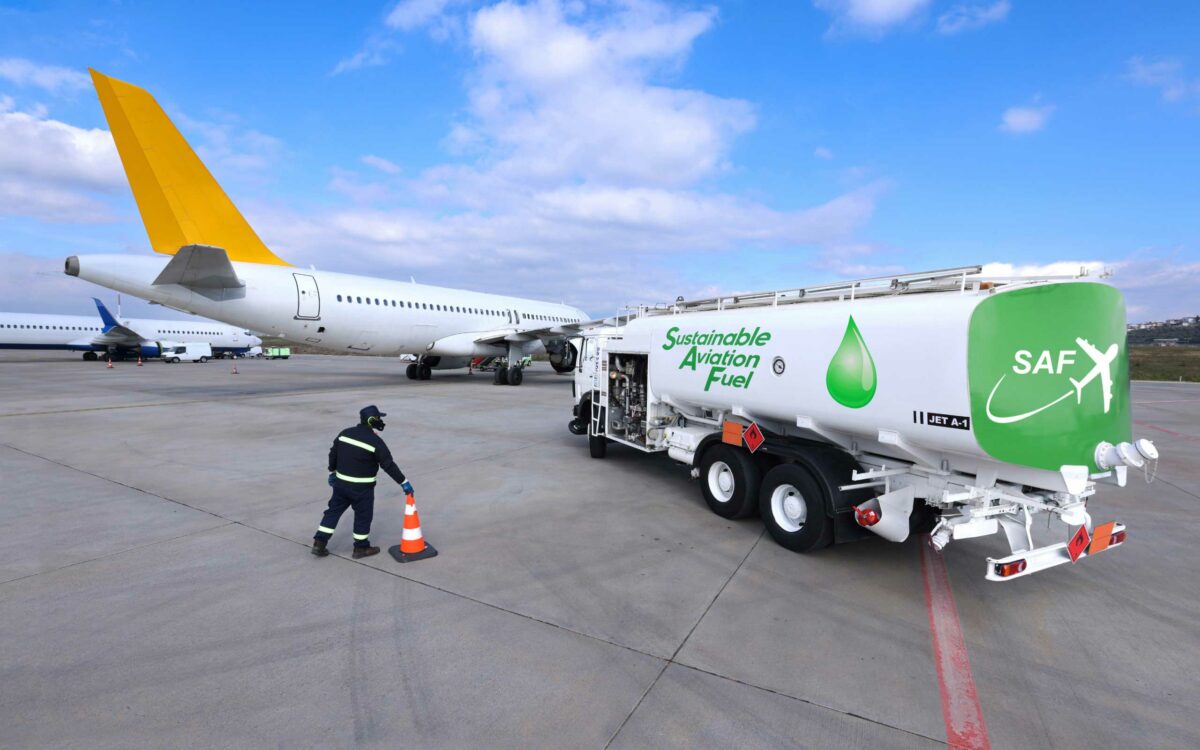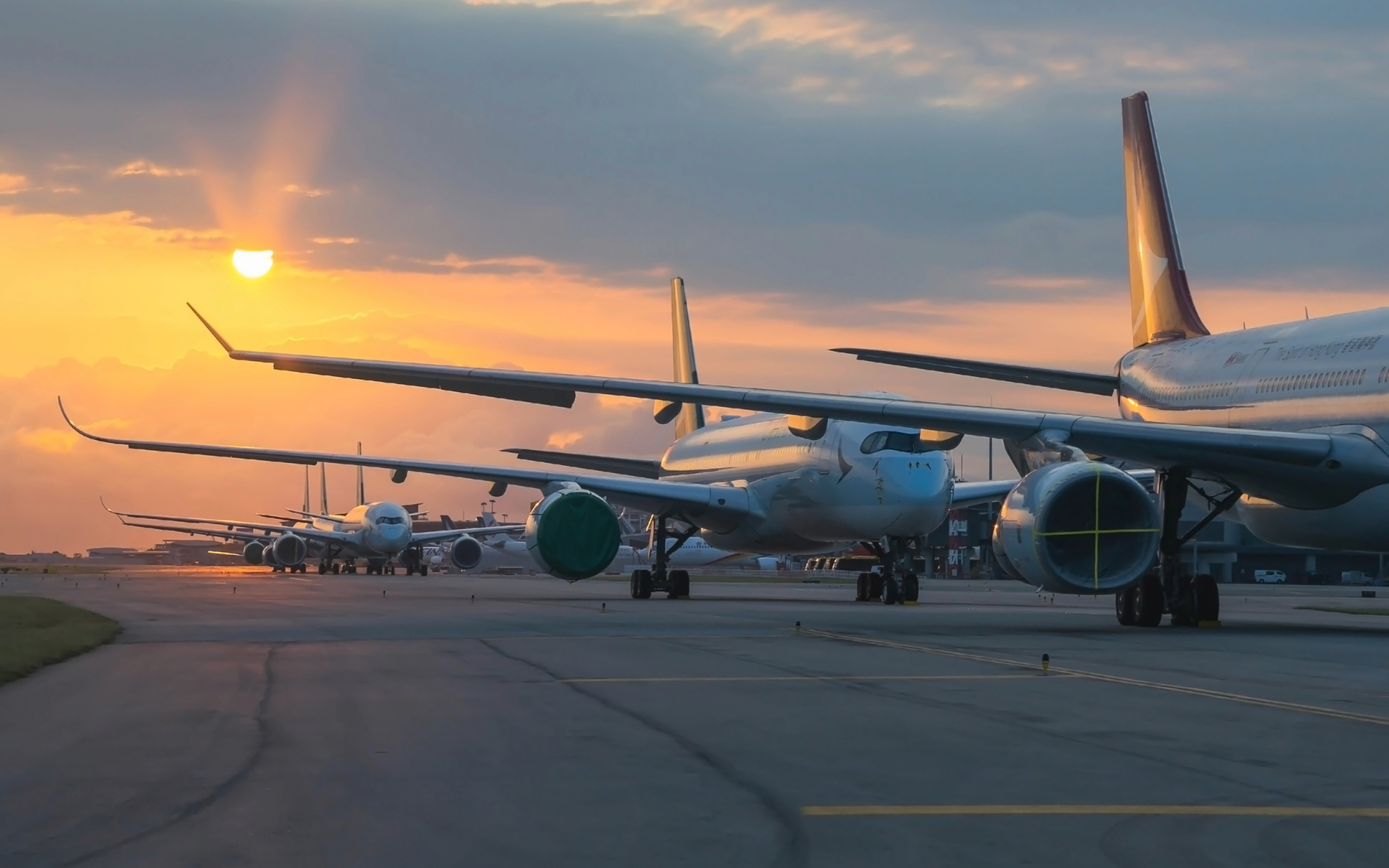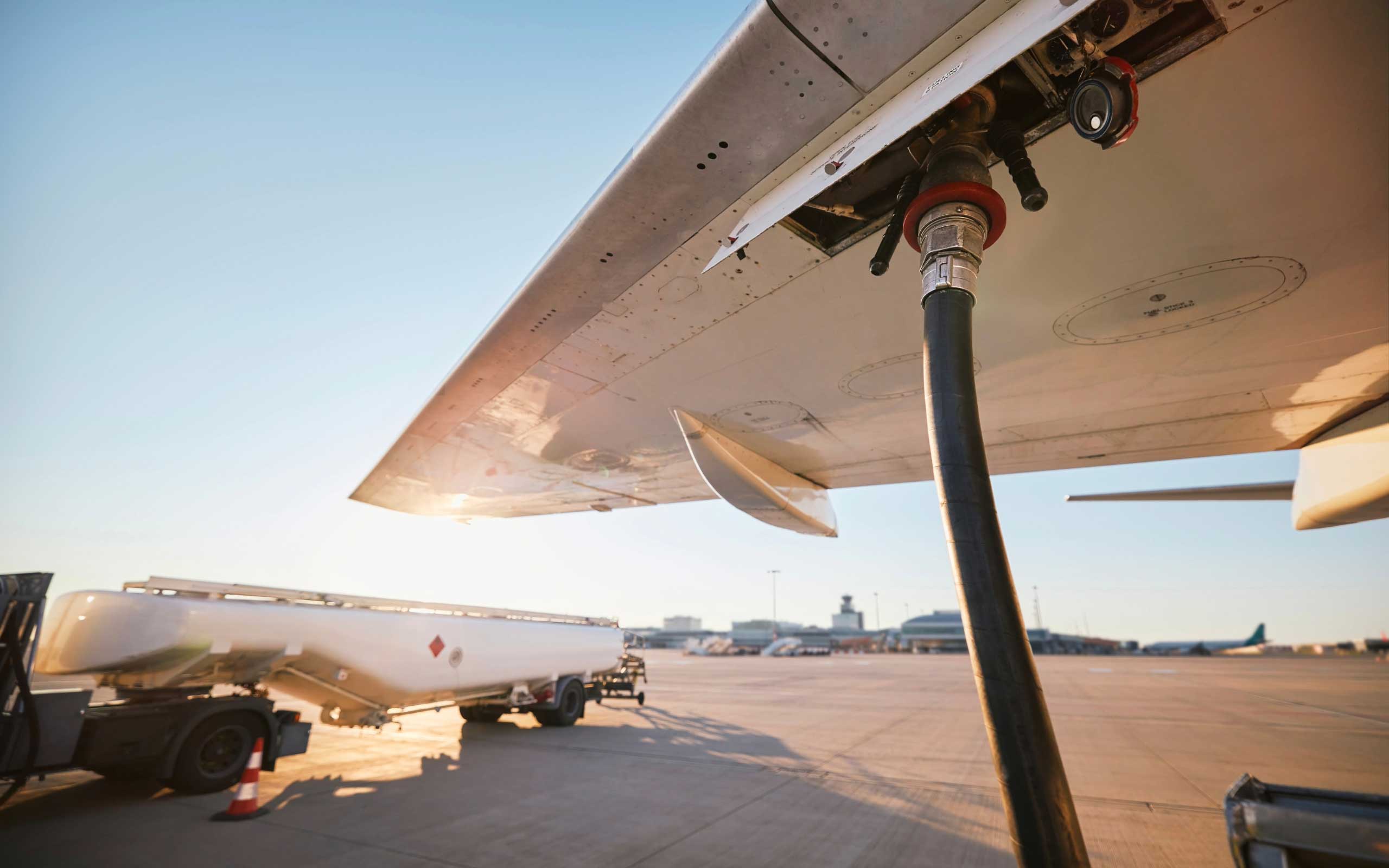Sustainable Aviation Fuel (SAF) is changing the game for business aviation. The industry looks to cut its carbon footprint, and sustainable aviation fuel (SAF) offers a promising solution. SAF can reduce greenhouse gas emissions by up to 80% compared to regular jet fuel.
Table of Contents
Sustainable aviation fuel could reach a market value of $14.8 billion by 2032, showing strong growth in this sector. This rise reflects the increasing demand for greener travel options. More companies are now looking to SAF to meet their sustainability goals.
Business aviation is taking steps to support SAF use. Rolls-Royce has launched a program called SAFinity to help customers fly more sustainably. The program mixes verified sustainability projects with direct investment in SAF. This approach aims to boost SAF availability and use across the aviation industry.
Understanding Sustainable Aviation Fuel (SAF)
Sustainable Aviation Fuel (SAF) is changing how planes fly. It burns cleaner than regular jet fuel and helps cut pollution from air travel.
Composition and Types of SAF
SAF is made from different things, not just oil. It can come from plants, waste oils, or even garbage. One common type is Hydroprocessed Esters and Fatty Acids (HEFA), made from things like used cooking oil.
Other types of SAF use stuff like:
- Wood waste
- Algae
- Farm leftovers
SAF works in regular jet engines. Planes can use it mixed with normal jet fuel or by itself. The fuel must meet strict rules to be safe for flying.
Benefits of SAF
SAF helps fight climate change. It can cut greenhouse gas emissions by about 80% compared to regular jet fuel. This is a big deal for reducing air travel’s impact on the planet.
Other good things about SAF:
- It burns cleaner, making less air pollution
- It can be made from waste, which helps reduce trash
- It doesn’t need new plane engines, so it’s easy to use
SAF also helps airlines meet their goals for cutting carbon. As more SAF is made, it could get cheaper. This might lead to more companies using private jets that run on cleaner fuel.
Scaling Up SAF Production and Supply
Sustainable aviation fuel (SAF) production is growing to meet rising demand. New technologies and supply chain improvements are key to increasing SAF availability for business aviation.
Technological Innovations in SAF Production
SAF production capacity is expanding through innovative processes. Companies like Neste are developing new methods to convert diverse feedstocks into SAF.
E-fuels, made from CO2 and green electricity, show promise for future production. These synthetic fuels could help meet growing SAF demand.
Improved catalysts and reactor designs are boosting SAF yield and quality. This allows producers to make more fuel from the same amount of raw materials.
Challenges and Solutions in Supply Chain
SAF producers face a few challenges when scaling up, and one of these challenges is the limited feedstock supply. To address this issue, producers are actively exploring new sources, such as agricultural waste and algae, in an effort to expand their options.
Moreover, improving SAF distribution networks is also crucial for successful scale-up. This process involves building dedicated pipelines and storage facilities at airports to ensure efficient supply and storage of the fuel.
Furthermore, government mandates are actively driving SAF adoption. The International Air Transport Association (IATA) strongly supports policies that aim to increase SAF use, recognizing the importance of these initiatives in promoting sustainability within the aviation industry.
In addition to these efforts, partnerships between airlines, fuel producers, and airports play a vital role in coordinating SAF supply. This collaboration is essential for meeting the industry’s sustainability goals, as it enables stakeholders to work together towards a common objective.
Policy Framework and Market Dynamics
Regulations and policies play a key role in shaping the adoption of sustainable aviation fuels (SAF). Governments and international bodies have introduced measures to promote SAF use and reduce carbon emissions in the aviation sector.
International Regulations and Agreements
The International Civil Aviation Organization (ICAO) has actively set global standards for SAF through its Carbon Offsetting and Reduction Scheme for International Aviation (CORSIA). This program’s primary objective is to achieve carbon-neutral growth in international aviation, starting from 2020 and continuing into the future.
Under CORSIA, airlines must offset their emissions growth by either purchasing carbon credits or using SAF. Consequently, this scheme has effectively spurred interest in SAF production and use across the entire aviation industry.
In addition to the ICAO’s efforts, many countries have also taken proactive steps by setting their own targets for SAF adoption. For instance, the European Union has gone a step further by proposing mandates that require a minimum percentage of SAF usage in aircraft fuel.
Impact of Policies on SAF Adoption
Government policies significantly influence SAF market growth. By offering tax incentives, grants, and loan guarantees, governments can effectively help reduce the cost gap between SAF and conventional jet fuel, making SAF a more attractive option for airlines.
For example, in the United States, the Renewable Fuel Standard actively provides credits for SAF production. As a result, this policy has successfully boosted investment in SAF facilities and technology, fostering growth within the industry.
Furthermore, mandates for SAF use can create a stable demand, which in turn encourages producers to scale up their operations. However, policymakers must carefully ensure that the supply can meet the mandated levels to avoid any potential shortages or market disruptions.
Ultimately, policy support is crucial for achieving aviation’s sustainability goals. As more countries commit to net-zero emissions targets, it is highly likely that SAF policies will become more ambitious and widespread, driving the industry towards a more sustainable future.
Future of SAF in the Aviation Sector
Sustainable aviation fuel (SAF) is set to play a crucial role in reducing emissions from air travel. New technologies and industry commitments are paving the way for wider SAF adoption in coming years.
Advancements in Feedstock and Production Technology
SAF producers are actively expanding their horizons beyond traditional biomass feedstocks. They are exploring renewable feedstocks such as agricultural waste, algae, and municipal solid waste. This diversification effectively addresses sustainability concerns while simultaneously increasing the available supply of feedstock.
Moreover, power-to-liquid technology is also making significant progress. This innovative approach uses renewable electricity to produce SAF from CO2 and water. As the costs associated with this technology continue to decrease, power-to-liquid SAF could potentially become a major source of sustainable aviation fuel in the future.
In addition to these advancements, ASTM D7566, the key specification for SAF, is constantly evolving. The specification now includes a wider range of production pathways, which enables greater innovation within the industry, allowing producers to explore new methods and technologies for creating sustainable aviation fuel.
Prospects for Decarbonizing the Aviation Industry
The aviation industry expects SAF to contribute up to 50% of emissions reductions in the sector. In line with this expectation, many airlines have set ambitious SAF usage targets for 2030 and beyond, demonstrating their commitment to sustainability.
To support these goals, governments are actively introducing policies aimed at boosting SAF production and use. These policies include blending mandates. These mandates require a certain percentage of SAF to be mixed with conventional jet fuel. There are also financial incentives that encourage the development and adoption of SAF.
Moreover, the industry is also working towards achieving carbon neutral growth. SAF plays a key role in this effort, alongside other initiatives such as improved energy efficiency and operational changes designed to reduce the environmental impact of aviation.
However, despite these positive developments, challenges remain in scaling up SAF production. High costs and limited availability continue to be significant hurdles that must be overcome. Nevertheless, with continued investment and innovation in the field, SAF can transform aviation sustainability. It paves the way for a greener future in air travel.
Frequently Asked Questions
Sustainable Aviation Fuel (SAF) is a key innovation in business aviation. It offers environmental benefits and technological advancements while facing integration and scaling challenges.
What is Sustainable Aviation Fuel (SAF) and how does it differ from conventional aviation fuel?
SAF is a renewable alternative to fossil-based jet fuel. It’s made from sustainable sources like plant oils, agricultural residues, and waste materials.
Unlike conventional fuel, SAF significantly reduces carbon emissions. It can be used in existing aircraft engines without modifications.
How can SAF be integrated into existing aircraft and infrastructure within business aviation?
SAF is a drop-in fuel, meaning it can be blended with conventional jet fuel. This allows for easy integration into current fueling systems.
Business aviation operators can use SAF without changing their aircraft or engines. Airports are increasingly offering SAF as an option for business jets.
What are the environmental benefits of using Sustainable Aviation Fuel in business aviation?
SAF can reduce carbon emissions by up to 80% compared to fossil fuels. It helps business aviation lower its environmental impact and meet sustainability goals.
Using SAF also reduces particulate matter emissions, improving air quality around airports.
What advanced technologies are being developed to produce SAF more efficiently?
Scientists are exploring new feedstocks like algae and municipal solid waste. These could increase SAF production and reduce costs.
Advanced refining processes are also being developed to improve SAF yield and quality. Researchers are also working on ways to capture carbon during production.
Can SAF meet the fuel demand of the entire business aviation sector?
Currently, SAF production is limited. Only about 300 million gallons of SAF are used worldwide annually.
Increasing production capacity is crucial. The industry aims to boost SAF availability to meet growing demand from business aviation.
What are the challenges and opportunities in scaling up the production of SAF?
Challenges include high production costs and limited feedstock availability. Scaling up requires significant investment in production facilities.
Opportunities exist in developing new technologies and expanding feedstock sources. Government incentives and industry partnerships can help drive SAF adoption and production growth.
For further information, please contact:
Aviation Services Management FZE
Suite 217, 8WB, DAFZA, Dubai, UAE
Tel: +971 4 4097755
Email: sales@asm.aero
Request a Fuel Quote











